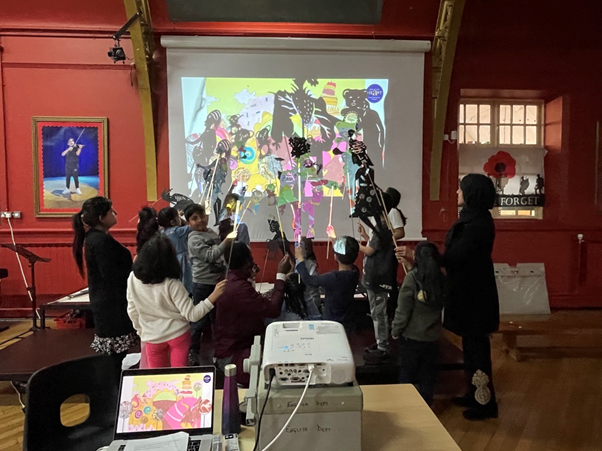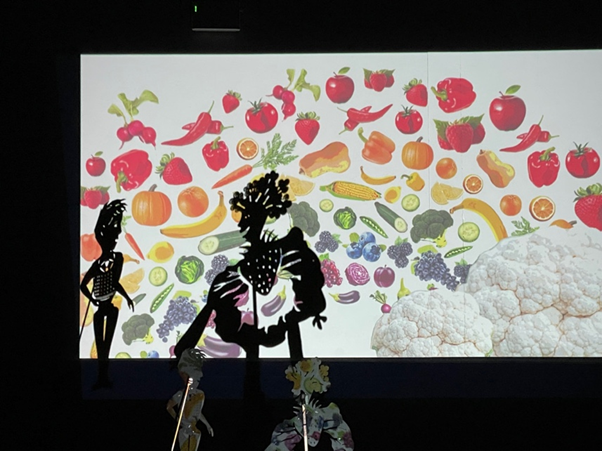The role of arts and culture in supporting the health and wellbeing of our citizens is well recognised by Birmingham City Council. Throughout the last year, we have worked to champion our local grassroots community organisations to conduct arts, culture, and health projects specific to communities.
We focused on our Bangladeshi, Pakistani, and Chinese communities to help close the gap on the inequalities these communities face in our city. Birmingham City Council are passionate about engaging with the arts and cultural sector. It is a vital public service and a crucial part of our strategy to improving our city’s health and wellbeing.
The challenge
Birmingham is home to a diverse population with a high proportion of Bangladeshi, Pakistani, and Chinese communities, which are among those with the poorest health, both nationally and locally. So, it is imperative to us that we continue to work on improving our collective understanding of the health requirements and gaps within these communities.
The scale and specifics of the unjust and avoidable differences in peoples’ health across populations and communities needs addressing, in an inclusive manner that embraces intersectionality. The benefits of arts and culture to health and wellbeing have been well documented, and the life-course benefits such as influencing maternal nutrition and childhood development, shaping educational and employment opportunities, tackling chronic stress and musculoskeletal issues, to enabling self-expression and empowerment, can help address health inequalities, inclusive of how these factors combine and interact to minimise the wider determinants of health.
In Birmingham we want to change the narrative often used around health inequalities. They are not simply a fact, but rather an unacceptable wrong that must be addressed with urgency and proactivity. Our arts, culture, and health programme allows us to continue to strengthen our partnership with the arts and culture sector organisations, communities, and individuals across the city. With our commissioned work, we are harnessing the power of arts and culture to enact positive change with our communities to tackle health inequalities and develop and deliver solutions with them.
The solution
In the last year, Birmingham City Councils Public Health Division have completed, in partnership with local and grassroots organisations, a range of arts, culture, and health-related projects in three communities: Bangladeshi, Pakistani and Chinese.
Each programme was a blend of Arts, Culture, and Health to raise awareness in the five focus areas:
- Pregnancy
- Mental health
- Musculoskeletal disease
- Cardiovascular disease
- Diabetes
Each programme was commissioned with the following communities and aligned, where possible, with specific cultural events:
- Pakistani
- Bangladeshi, tied in with the 50th Year of Independence
- Chinese, tied in with the Chinese New Year
The impact
Each commissioned provider was required to explore one of the five themes, delivering evidence-based educational information to participants, and create a minimum of 10 artistic outputs. Providers were asked to demonstrate genuine partnership development, inclusivity, and representation of local communities throughout their projects by working in partnership with local groups and organisations. Co-designing of the projects with participants was at the core, to ensure that proposals were relevant to local needs, circumstances, and perspectives. Finally, we asked for projects to be artistically bold, ambitious, and exciting whilst being time-limited, realistic, deliverable, financially scalable, having achievable outcomes and measurable impact.
-
Pregnancy projects looked at a series of participatory style skills-based workshops to engage, educate and empower participants around pregnancy in areas such as eating and cooking healthily to post-natal depression/trauma.
-
Mental health projects looked utilising poetry and classical music to build social connections and form friendships, helping participants be better informed on the positive impacts of using arts for mental health.
-
Musculoskeletal Disease projects used a blend of arts and culture by conducting walking groups for males, females and a mixed group, who performed one-hour walks three times a week, in which story-sharing walking sessions were held by listening to and telling stories of others.
-
Cardiovascular Disease projects merged arts, culture, and health by looking at culinary and nutritional information with informative workshops to improve their nutritional outlook. Participants were encouraged to consider their own personal and domestic tasks, such as cooking, in a new way, and to consider their nutritional health in a new context. Participants were encouraged to interpret their favourite family dish in new ways, such as having discussions and producing recipe cards, which helped develop health literacy around diabetes, heart health, cholesterol, blood pressure, dietary sodium, and saturated fat as examples.
-
Diabetes projects focused on awareness of the causes and warning signs of type 2 diabetes, and for participants to learn about preventative measures and actions that can achieve this such as healthy eating and exercise. Engaging workshops were held to discuss type 2 diabetes information with a variety of resources, from a shadow puppet performance to quizzes.
The projects aimed for participants to become ambassadors of good health and to empower them to share knowledge with their own and other communities, allowing for active learning to occur. Projects identified a range of measures that helped with the prevention, management, and treatment of a range of different health outcomes that include:
-
improvements in health literacy relating to pregnancy, diabetes, cardiovascular disease, musculoskeletal disease, and mental health
-
improvement in mental health and wellbeing
-
increased skills and confidence in artistic output, helping to boost the self-esteem and confidence of participants
-
improved confidence to discuss health at home, particularly in communities/genders that do not usually have health conversations
-
inclusion of community groups with each other, but also participants feeling that their voices had been heard (increase in engagement with seldom heard voices).
Furthermore, projects were delivered in wards with high levels of social and economic deprivation, helping to reduce health inequalities for the citizens within those areas. 28.9 per cent of projects were delivered in the wards that were the top 10 most deprived, while 75.6 per cent of projects were delivered in the top 20 most deprived wards. This suggests that the majority of participants were from some of the most deprived areas of Birmingham, which identifies further the impact of targeted, local, and place-based public health commissioning, specific to arts and culture.
How is the new approach being sustained?
Arts, culture, and health projects offer a coordinated approach to public health, as it not only can provide and build an evidence-base of knowledge to improve health outcomes for our communities, but can also allow councils to learn, observe and explore deeper with communities what the barriers and enablers are. Furthermore, it can help form a new way of working with our arts and culture sector organisations and our communities to ensure that our commissioned work is defined, informed and delivered with our local communities.
Birmingham City Council will continue to champion, fund, and support the field of arts, culture, and health in many ways, from our permanent inclusion of the Arts and Culture programme within the Public Health Division to the development of our council-wide cultural strategy.
The impact of arts and culture on the promotion of public health is well recognised, and we are committed to ensuring that this impact is felt at a social, political, and structural level to have a lasting legacy. Birmingham City Council are currently developing our Creating a Healthy City Strategy which will underpin our public health approach as a city from 2022-2030 and help further champion the role of arts and culture within public health.
It is our goal to ensure that everyone in Birmingham has the right and equal opportunity to engage and participate in arts and cultural activities for the benefit of their health, irrespective of where they may live or work, according to the extent that their desire, ability, and creative resource will allow for.
Lessons learned
The direct and indirect impact of our arts, culture and health projects have allowed for opportunities to celebrate, reflect and inspire our communities, with the aim of projects having a lasting legacy and impact fostering community cohesion, pride, and social action. Direct impacts were seen on mental health (socialisation, confidence, motivation), physical health (antenatal care, cardiovascular health), health literacy (knowledge of conditions and non-communicable diseases), and behaviour and lifestyle change.
The projects commissioned help bridge the gap, and as demonstrated, engagement with arts, culture, and health projects has a beneficial effect on health and wellbeing, and therefore has a vital role to play in public health and in preventing illness and infirmity from developing or worsening in the longer term. We will continue with our arts and health projects, we will endeavour to, collectively with our citizens and local organisations, ensure that are projects are targeted to specific community groups, with the hope that the narrative can begin to change; from “hard to reach groups” to their participation being the norm in public health interventions, addressing the health and wider social determinant inequalities that exist.
Contact
Ricky Bhandal, email: [email protected]
Rhys Boyer, email: [email protected]
Joseph Merriman, email: [email protected]


